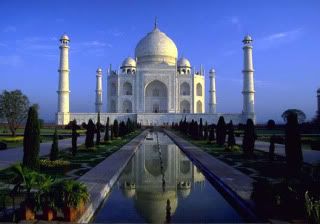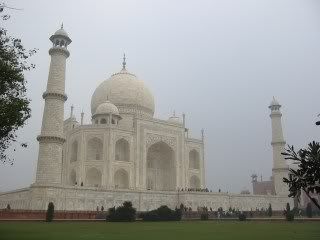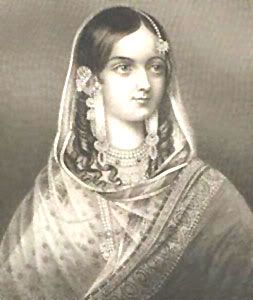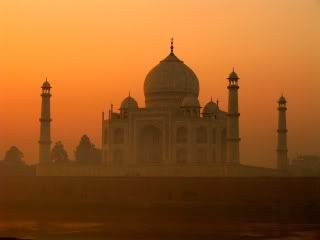Welcome to my blog.
“What should be sacrifice for love?”
This is the popular quote in the Nur Kasih drama that reaching its ending soon. Or in Malay, “Apa yang perlu dikorbankan demi cinta?” Even the original slot still has a few episodes left, the tv3’s evening slot from 7.25pm until 8.00pm has been used for Nur Kasih without any interruption from commercial break. Still remember in the last time episode, Nur Amina is depressed by her husband decision for not taking her to his trip to India even though he has promised to Nur Amina that they will take 3 days off and take her to Taj Mahal. The last minute decision by Adam led to a second separation between him and Nur Amina. What happen next will be aired tonight. (Very excited..)
The Taj Mahal is a tomb built by The Mughal Emperor at that time, Shah Jahan for his favorite wife, Mumtaz Mahal. It takes about 20 years to complete. It is also among the Mughal Empire finest architecture. The Taj Mahal became a UNESCO World Heritage Site in 1983. The construction of Taj Mahal started in 1632 and finished around 1653.
ARCHITECTURE
The central focus of Taj Mahal is the tomb. Like any other Mughal’s Tomb, it used Persian origin as its basic elements. The white marble structure stands on a square plinth and consists of a symmetrical building with an iwan (an arch-shaped doorway) topped by a large dome and finial. The base structure is essentially a large, multi-chambered cube with chamfered corners, forming an unequal octagon that is approximately 55 meters on each of the four long sides. On each of these sides, a massive pishtaq, or vaulted archway, frames the iwan with two similarly shaped, arched balconies stacked on either side.
This motif of stacked pishtaqs is replicated on the chamfered corner areas, making the design completely symmetrical on all sides of the building. Four minarets frame the tomb, one at each corner of the plinth facing the chamfered corners. The main chamber houses the false sarcophagi of Mumtaz Mahal and Shah Jahan; the actual graves are at a lower level.
The minarets are about 40 meters tall.
HISTORY
Even though Shah Jahan has three wives, his most favorite is Mumtaz Mahal. Her real name is Arjumand Banu Begum. She is also the mother to Mughal well-known Emperor, Aurangzeb. She died during the birth of her fourteenth child, Gauhara Begum. The grief of Shah Jahan led to an inspiration of Taj Mahal. Arjumand married with Prince Khurram (Shah Jahan) when she is 19. Even Khurram has other 2 wives, their relations is nothing more than a status of marriage. Arjumand is the one gain the attention of Khurram and the intimacy, affection, attention and favour to arjumand exceed any other. Thus, she gets the title Mumtaz Mahal Begum (Chosen One of the Palace).
Mumtaz Mahal had a very deep and loving marriage with Shah Jahan. Even during her lifetime, poets would extol her beauty, gracefulness and compassion. Mumtaz Mahal was Shah Jahan's trusted companion, travelling with him all over the Mughal Empire. His trust in her was so great that he even gave her his imperial seal, the “Muhr Uzah”. Mumtaz was portrayed as the perfect wife with no aspirations to political power in contrast to Nur Jehan, the wife of Jahangir who had wielded considerable influence in the previous reign. She was a great influence on him, apparently often intervening on behalf of the poor and destitute. But she also enjoyed watching elephant and combat fights performed for the court. It was quite common for women of noble birth to commission architecture in the Mughal Empire.
The Taj Mahal is the symbol of love to her beauty and life.
More Information can be refer here.
 RSS Feed
RSS Feed Twitter
Twitter



















0 comments:
Post a Comment